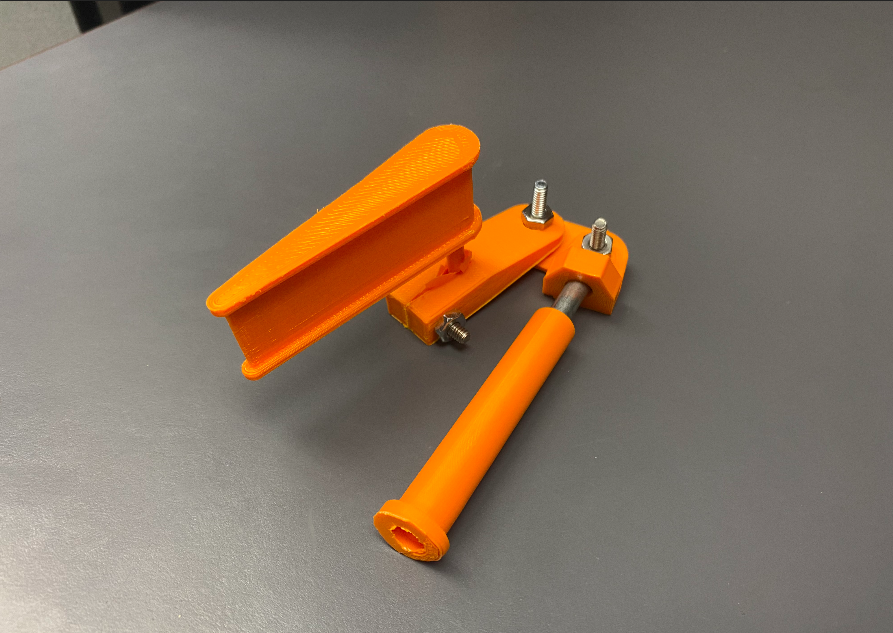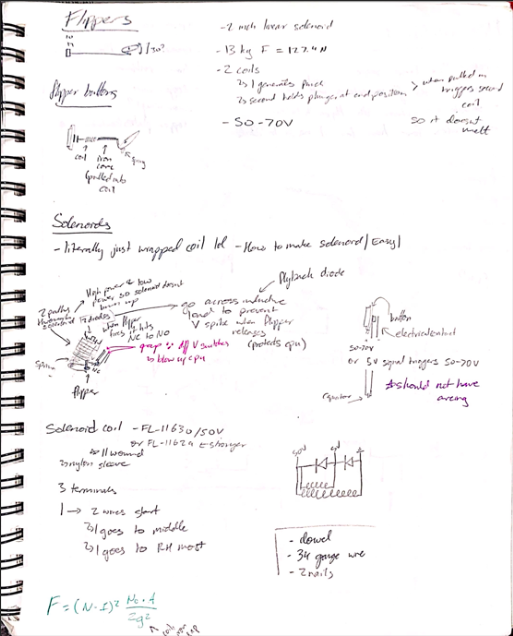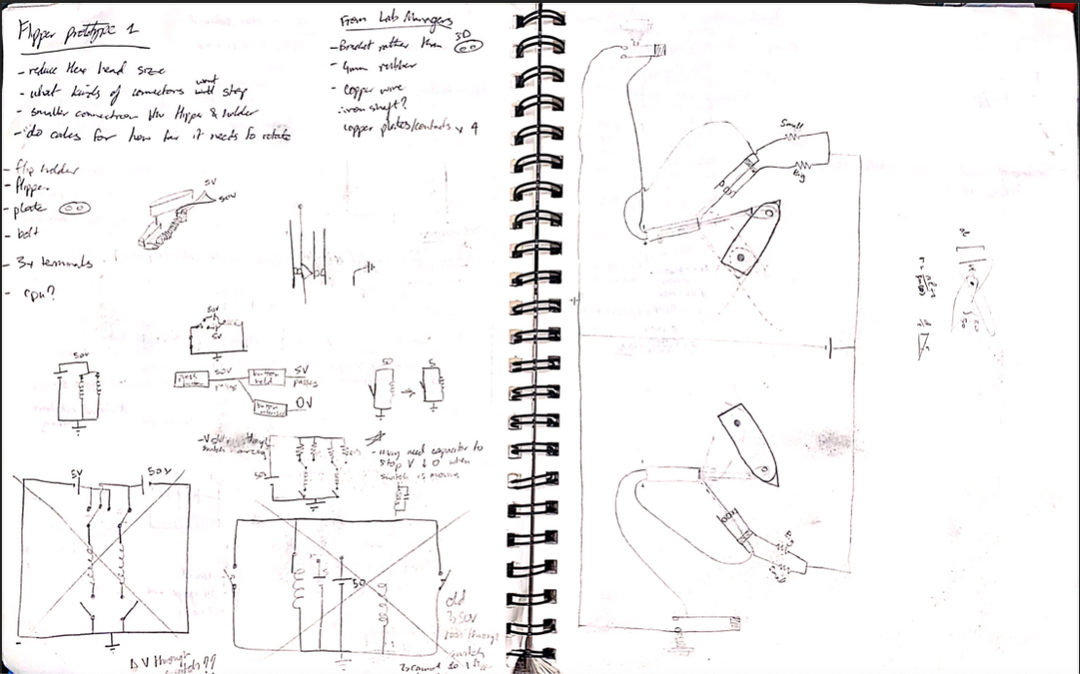- Published on
Initial Prototyping of Flipper
After research into current pinball machines, I have learnt that they have to have two voltages (and currents) to actuate the flipper. As soon as the button is pressed, 50V runs through the solenoid to produce 125N of force. After a certain time has elapsed, the voltage drops to 5V to maintain the upwards position of the flipper. This is so the coil doesn't burn out, but there is still a strong actuation. In professional pinball machines, two wires are coiled in the solenoid and each voltage runs through the respective wire.
I made a prototype of a homemade solenoid, which worked with just 9V. Additionally, I created the connector between the solenoid and the flipper.
In the future I would like to create a more accurately wound solenoid and determine an actuation distance. The flipper could then be edited to have the appropriate range of motion with this actuation distance.
I made a prototype of a homemade solenoid, which worked with just 9V. Additionally, I created the connector between the solenoid and the flipper.
In the future I would like to create a more accurately wound solenoid and determine an actuation distance. The flipper could then be edited to have the appropriate range of motion with this actuation distance.
First Prototype of Flippers
Flipper with solenoid and pivot joint


